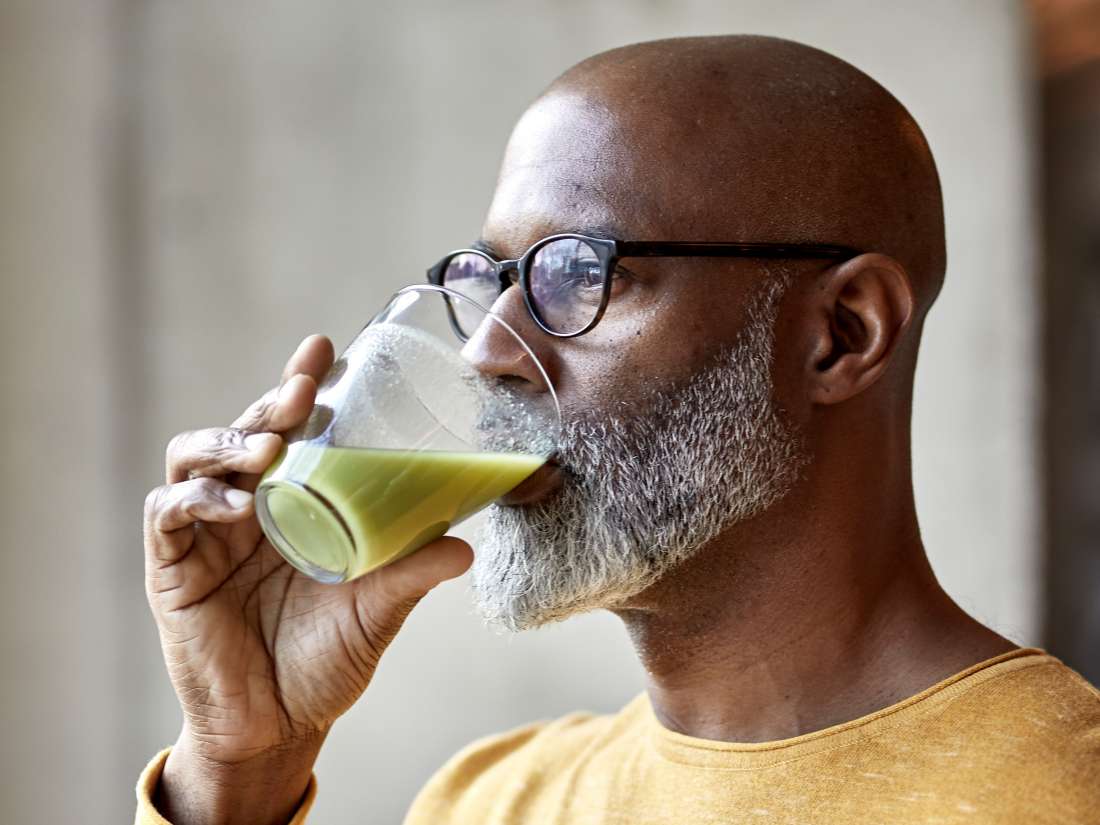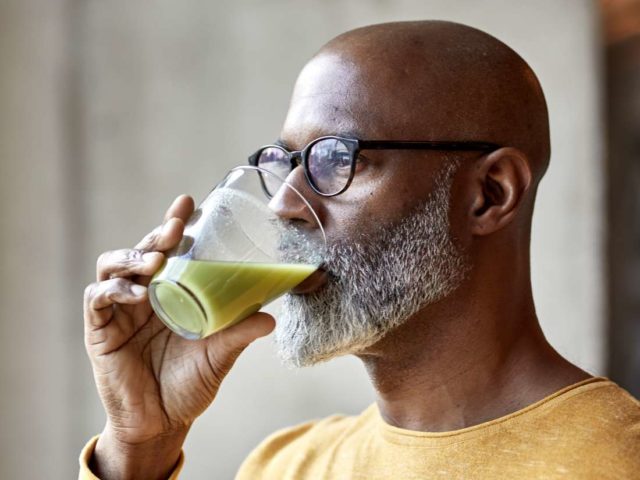
A full liquid diet means that a person eats no solid foods and only consumes liquids, such as soups, juices, and smoothies. For most people, it is a temporary measure and not a long-term nutritional strategy.
Full liquids are different than clear liquids. On a clear liquid diet, a person can only have clear liquids, such as water, tea, and broth.
Full liquids offer more diverse flavor and greater nutritional value. A person may be able to eat pureed versions of their favorite foods in addition to a wide variety of thicker liquids, such as tomato soup.
In this article, learn more about full liquid diets, including their uses, the possible effects, and what to eat.
Doctors usually recommend full liquid diets as a short-term strategy when a person has a medical issue that makes eating solids dangerous.
They might recommend that people follow a full liquid diet in the following situations:
- when recovering from pancreatitis
- following weight loss surgery, as a transitional step between clear liquids and soft foods
- following dental or oral surgery, either to reduce pain or because a person is unable to chew
- after gastrointestinal surgery or to ease the symptoms of a digestive disease
- following the loss of multiple teeth
- after breaking bones in the mouth or jaw
- when a doctor or dentist wires the jaw shut
Some people may also use liquid diets to try to lose weight, as a full liquid diet makes it more difficult to consume a large number of calories.
Highly restrictive diets for weight loss are not safe, and doctors do not recommend them. A person will often regain the weight as soon as they return to a normal diet.
The foods that a person should eat on a full liquid diet depend on their nutritional needs and a doctor’s recommendations. A person may be able to consume the following:
- all of the foods that a clear liquid diet allows, including:
- water
- fruit juices
- lemonade
- soup broth
- gelatin
- honey
- tea
- coffee
- popsicles
- pureed fruits and vegetables
- strained or pureed soups
- milk
- strained or pureed meats
- baby food
- cream of wheat
- strained oatmeal
- smoothies
- protein drinks and other liquid nutritional supplements
- ice cream
- milkshakes
- margarine, butter, and mayonnaise
- pudding
It can be challenging to get enough protein and fiber on a full liquid diet, so people following this diet — especially if they are doing so for longer than a few days — should prioritize nutrient-dense foods.
Some examples of foods that a person may be able to eat and that offer more nutritional value include:
- low sugar protein drinks
- fruit and vegetable smoothies
- soft egg-based products, such as eggnog or baby food with eggs
- pureed meats and beans
- mashed potatoes with meat-based gravy
- milk
People should ask their doctor to provide a detailed list of exactly which foods they should eat and which they should avoid when on a full liquid diet.
A person on a full liquid diet needs to avoid solid foods, as well as pureed foods that may have chunks in them.
Some examples of foods to avoid include:
- whole fruits and vegetables
- bread
- cereal
- soups containing large or hard chunks
- solid meat or fish
- anything with seeds or other hard or sharp particles
- nuts and peanut butter
- ice cream with chunks
- noodles
- rice
- cookies and cakes
- cheese
- tofu
For most people, a full liquid diet is a short-term measure. People who must stick to a full liquid diet for longer must be mindful of the foods that they eat and avoid potentially unhealthful options.
People may find the following practices helpful:
- avoiding getting all or most calories from sweet foods, such as ice cream
- increasing fiber intake by drinking thin smoothies comprising fruits, vegetables, and Greek yogurt
- trying milk as a protein source
- avoiding foods that have little nutritional value, such as popsicles and gelatin
- asking a doctor about vitamin and mineral supplements
- keeping a dietary log to track nutrients over time
It is very difficult to get enough nutrients on a full liquid diet, especially long term. Liquid diets are typically low in vitamin A, iron, vitamin B-12, and thiamine.
People who must eat a full liquid diet for extended periods may need to take supplements to prevent nutritional deficits.
It is possible to get enough protein, fiber, and other essential nutrients on a full liquid diet. However, doing so requires some planning and basic dietary knowledge.
People on this diet who are recovering from surgery may not have the energy or motivation to seek out healthful foods. One of the biggest risks is that a person may rely on easy but less nutritious foods, such as melted ice cream or high sodium broths.
While a full liquid diet may satisfy a person’s cravings better than a clear liquid diet, following a full liquid diet can still be difficult and frustrating.
In addition to malnutrition from long-term use, some other risks include:
- chronic hunger
- mood swings due to hunger
- lack of pleasure in eating
- difficulty eating out or participating in other social activities that center around food
Although doctors may recommend a full liquid diet for a variety of conditions, some research suggests that this diet may be more restrictive than necessary.
A 2010 study, for example, found that a full solid diet was safe for people recovering from mild acute pancreatitis and shortened hospital stays.
A 2012 analysis concluded that a soft diet was also safe for people recovering from mild acute pancreatitis.
A person whose doctor recommends a full liquid diet should ask them questions such as:
- What can I do to stay healthy on this diet?
- How long will I need to be on this diet?
- What are the risks of this diet?
- Why do you recommend this diet?
- Is there an alternative to this diet?
- What specific foods should I avoid?
Following a full liquid diet can be challenging. If it is necessary to commit to full liquids for a long time, a person should consult with a dietitian to ensure that they get enough vital nutrients.
In many cases, it may be possible to eat a satisfying and nutritious diet by pureeing the foods that a person usually enjoys.
Let’s block ads! (Why?)






